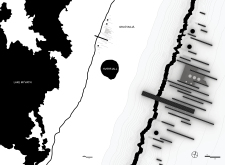5 key facts about this project
At its core, the project functions as a [describe the primary function, such as a cultural center, educational facility, residential complex, etc.], which is deeply integrated into the urban fabric of [Geographical Location]. It is designed to foster social interaction and community engagement, with spaces that encourage gatherings and activities. The layout is intuitive, allowing for seamless navigation throughout varying spaces, from communal areas to private sections, ensuring that diverse user needs are met.
Prominent architectural elements define the project. The façade, characterized by [describe materials and their arrangement], promotes both aesthetic appeal and environmental performance. The blend of [specific materials] not only enhances the building's visual identity but also optimizes its energy efficiency, reflecting a modern understanding of sustainable design practices. Large window openings are strategically placed to maximize natural light, reducing the need for artificial lighting during the day and promoting an environment that enhances wellbeing.
Internally, the project is distinguished by its effective spatial organization. Different zones within the building are purposefully designed to serve specific functions, such as [mention any important rooms or areas, like meeting spaces, workshops, or recreational areas]. Each area is connected yet distinct, promoting versatility and ensuring that users can engage with the space in multiple ways. The use of open floor plans in certain sections exemplifies contemporary architectural ideas focused on flexibility, allowing for adaptation to future needs or varied occupant activities.
Unique design approaches are evident throughout the project. For instance, the incorporation of [describe any innovative design aspects, such as green roofs, natural ventilation systems, or passive solar design] illustrates the architect's commitment to sustainability. These features not only demonstrate an understanding of environmental impact but also contribute to lower operational costs, underscoring the design's practicality.
Landscaping also plays a crucial role in the overall architectural strategy. The thoughtful integration of greenery and outdoor spaces provides opportunities for recreation and relaxation, enhancing the quality of life for users. Features such as [mention any landscaping elements, like gardens, terraces, or outdoor seating areas] create a seamless transition between the indoors and outdoors, enriching the experience of the building as a whole.
The architectural design of this project is a testament to the potential of thoughtful design in addressing both aesthetic and functional considerations. It invites exploration and interaction, encouraging the community to engage with the space actively. The collaboration of materials, spatial organization, and environmental integration reflects a commitment to enhancing the urban landscape of [Geographical Location].
For those interested in delving deeper into the architectural nuances of this project, exploring the detailed architectural plans, sections, and unique design ideas can offer valuable insights into its conception and execution. Engaging with these elements will provide a better understanding of how this project contributes to the architectural discourse and its relevance within the context of modern design.


























